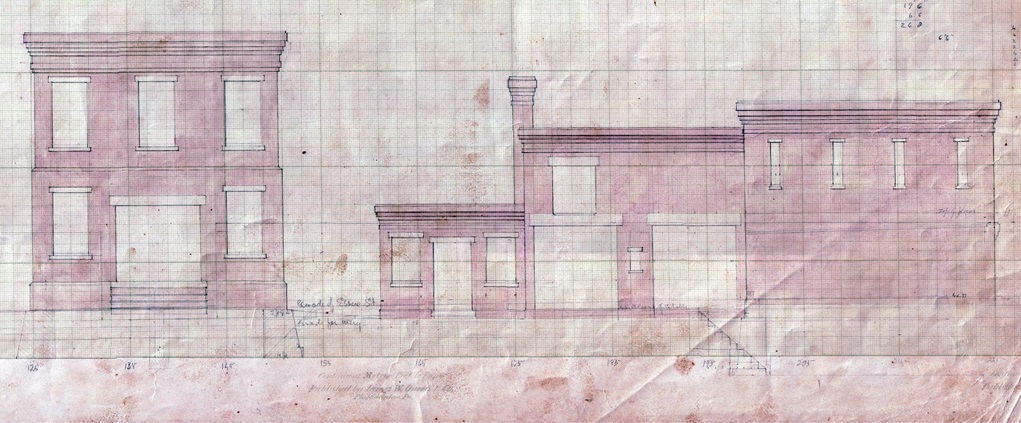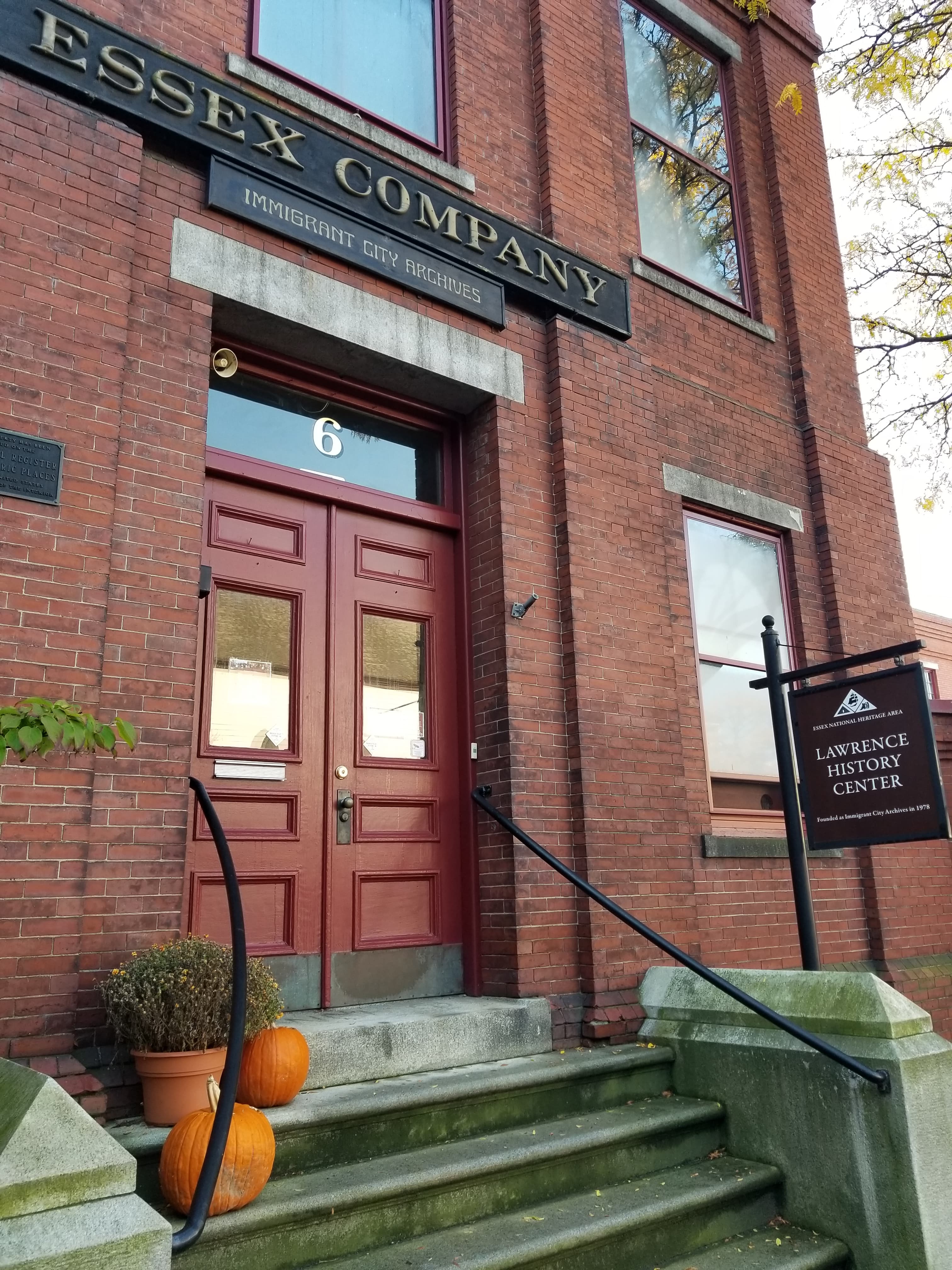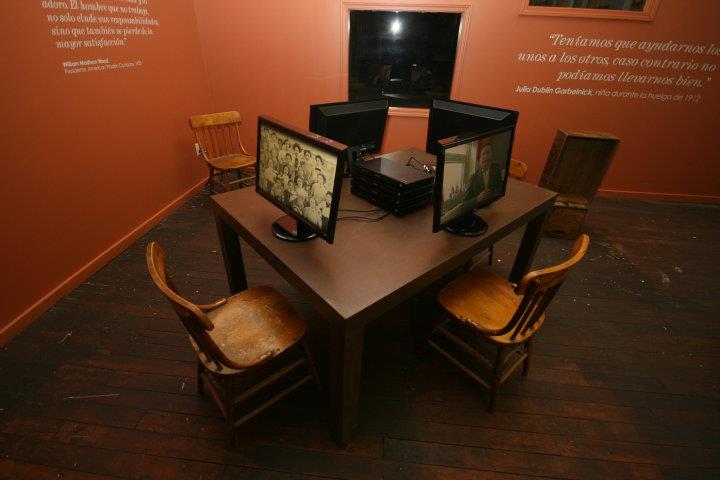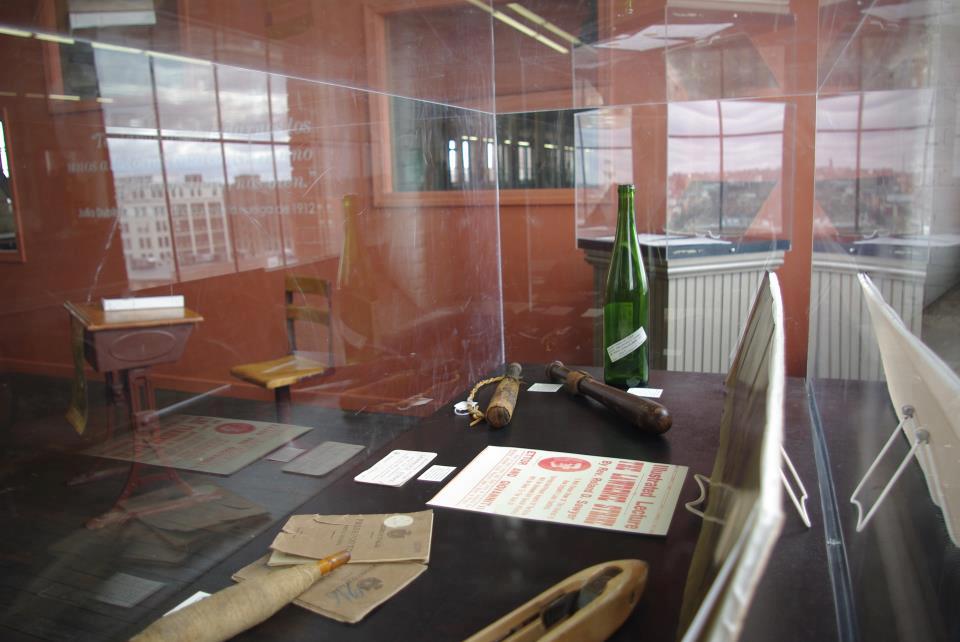
Founded in 1978 as the Immigrant City Archives by German immigrant Eartha Dengler, the Lawrence History Center’s mission is to collect, preserve, share, and animate the history and heritage of Lawrence and its people.
 Our initial collection was started at the YWCA and consisted of documents of resident women immigrants. Nearly 50 years later, we own and are located at 6 Essex Street, Lawrence, Massachusetts in the former Essex Company complex – a site on the National Register of Historic Places built in 1882-3 that includes a main office building, carpenter shop, blacksmith shop, stable, and warehouse. Our largest single collection is the Essex Company business and planning records that meticulously document the building of the City of Lawrence starting in 1845. Other collections include over 40,000 photographs and glass plate negatives, 800 digitally mastered oral histories, mayoral papers, non-current municipal records, church records, organizational records from local businesses and agencies, and an array of family and individual records that document the ethnically diverse and intellectually challenging nature of Lawrence. We engage the community by employing these materials through physical and online exhibits, symposia, educational programs, and research services to foster understanding of the interaction of the built community and the lives of those who live and work there.
Our initial collection was started at the YWCA and consisted of documents of resident women immigrants. Nearly 50 years later, we own and are located at 6 Essex Street, Lawrence, Massachusetts in the former Essex Company complex – a site on the National Register of Historic Places built in 1882-3 that includes a main office building, carpenter shop, blacksmith shop, stable, and warehouse. Our largest single collection is the Essex Company business and planning records that meticulously document the building of the City of Lawrence starting in 1845. Other collections include over 40,000 photographs and glass plate negatives, 800 digitally mastered oral histories, mayoral papers, non-current municipal records, church records, organizational records from local businesses and agencies, and an array of family and individual records that document the ethnically diverse and intellectually challenging nature of Lawrence. We engage the community by employing these materials through physical and online exhibits, symposia, educational programs, and research services to foster understanding of the interaction of the built community and the lives of those who live and work there.
Our collections are being digitized and made available through our website, OCLC WorldCat, Digital Commonwealth, and the Digital Public Library of America (DPLA). Our online exhibition, Bread and Roses Strike of 1912: Two Months in Lawrence, Massachusetts, that Changed Labor History, is one of seven exhibitions that were part of the DPLA April 2013 launch in Boston. Through this project and others in process, we move toward providing equal access to information in order to promote education in the broadest sense of the term.
Throughout 2012, we led a city-wide effort to commemorate the centennial anniversary of the 1912 Bread and Roses Strike. We created a bilingual exhibit that acted as a cultural event space in which a rich programmatic series took place. Over 70 events were attended by over 5,000 people across the year and a community dialogue flourished about issues that led to the strike – labor and living conditions, social justice, immigration and diversity, and the effectiveness of collective action –as current populations explored how these themes still resonate in their lives today.
Now in our fifth decade, we seek to better serve a community that is rapidly changing due to immigration and changes in the local economy. The past few years have marked enormous growth for us as we move from being an organization that ‘collects and preserves’ stories of the city to one that animates these stories for current residents, researchers, and visitors to Lawrence through rich and varied programming, the strength of our collections and the power of the history of an immigrant city on the rise.

